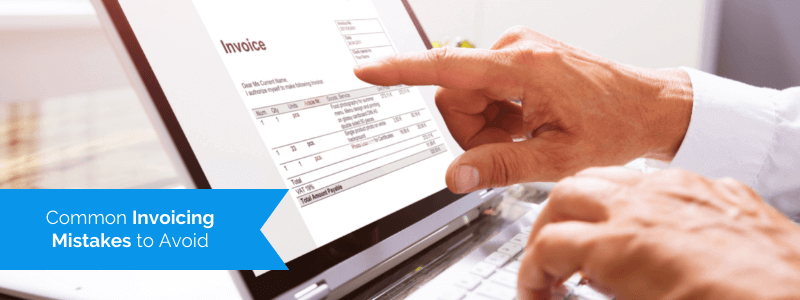It’s true: nobody’s perfect.
But when it comes to invoicing, a mistake can lead to lost revenue or worse—lost clients.
No matter if you’re a freelancer or a mega-corporation, you need to get paid for your products or services. But without an effective invoice, you risk miscommunication, a damaged reputation, and an interrupted cash flow.
In this post, we’ll help you avoid invoicing problems in your own business by walking you through ten of the most common mistakes.
Having Incorrect Customer Information
First (and perhaps most obviously), you don’t want to send your payment invoice to the wrong person.
It’s very important to know who handles accounting in your client’s company so that you include the appropriate name and details. If you mess up this information, you can appear unprofessional and disorganized.
Mistaking the customer’s information can hurt their trust in you, which is bad news for their ongoing customer loyalty.
Incorrect customer information can do more than cause a headache for the customer and diminish their trust in you; it can also lead to adding the wrong tax and VAT (Value-added Tax) rates.
As products move through the supply chain, their value naturally increases. VAT—known as GST in some countries—is the tax charged on the added value of a product or service.
But VAT can be complicated to calculate, and like sales tax, it depends on the customer’s location and unique details.
To avoid getting your customers’ information and tax rates wrong, you should double-check them whenever possible.
Using reliable invoicing software takes this task off your shoulders; you’ll only need to inspect it the first time you enter the customer information into the system.
With Regpack, instead of retyping customer details with each new invoice, you can use categorized tokens to insert all the information you want into the email with one click.
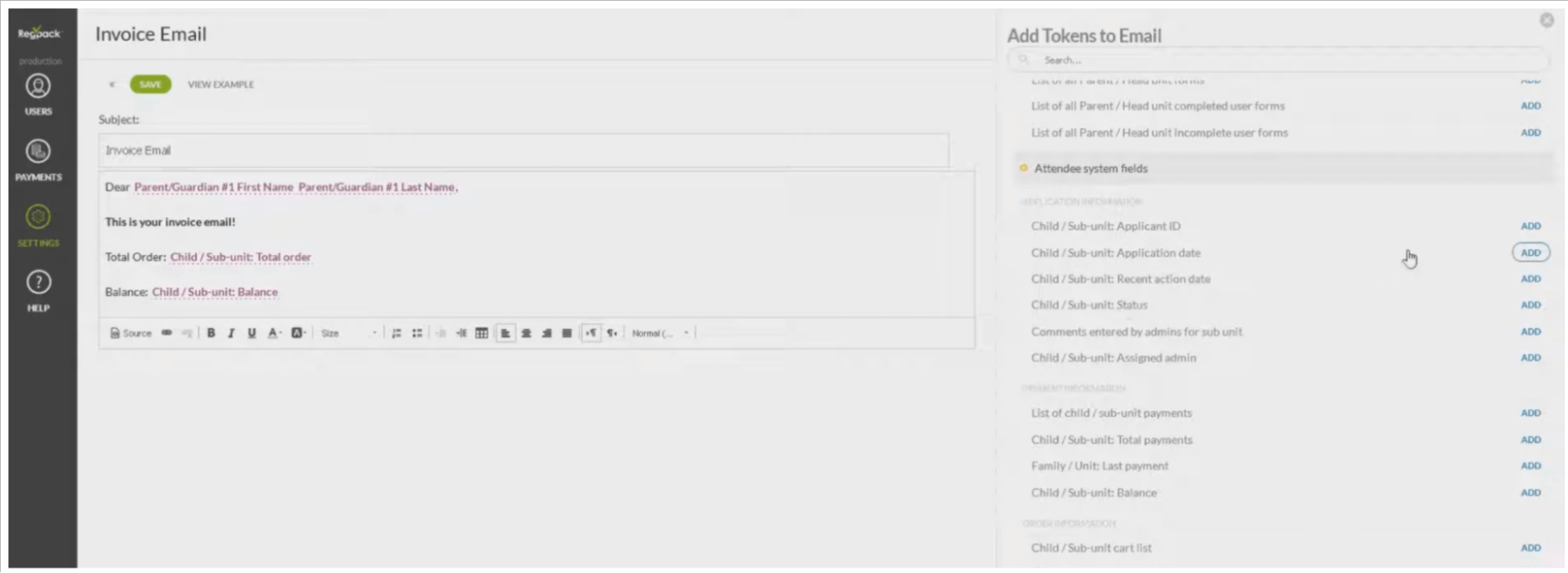
Source: Regpack
From there, the software will auto-fill customer information into each new invoice email, ensuring it’s the same every time.
Failing to Send an Invoice in a Timely Manner
Next, avoid falling into the trap of sending your invoices inconsistently or waiting too long to send them after work has been completed.
If your customer doesn’t see an invoice for a few days after they receive your product or service, that gives them the impression that you aren’t that concerned about payment.
If you can afford to wait a few days to send the bill, you probably won’t mind if they wait a while to pay. They can put your invoice on the back burner and worry about paying you later.
That’s the opposite impression you want to give, right?
Instead, send an invoice promptly as soon as the product or service is delivered.
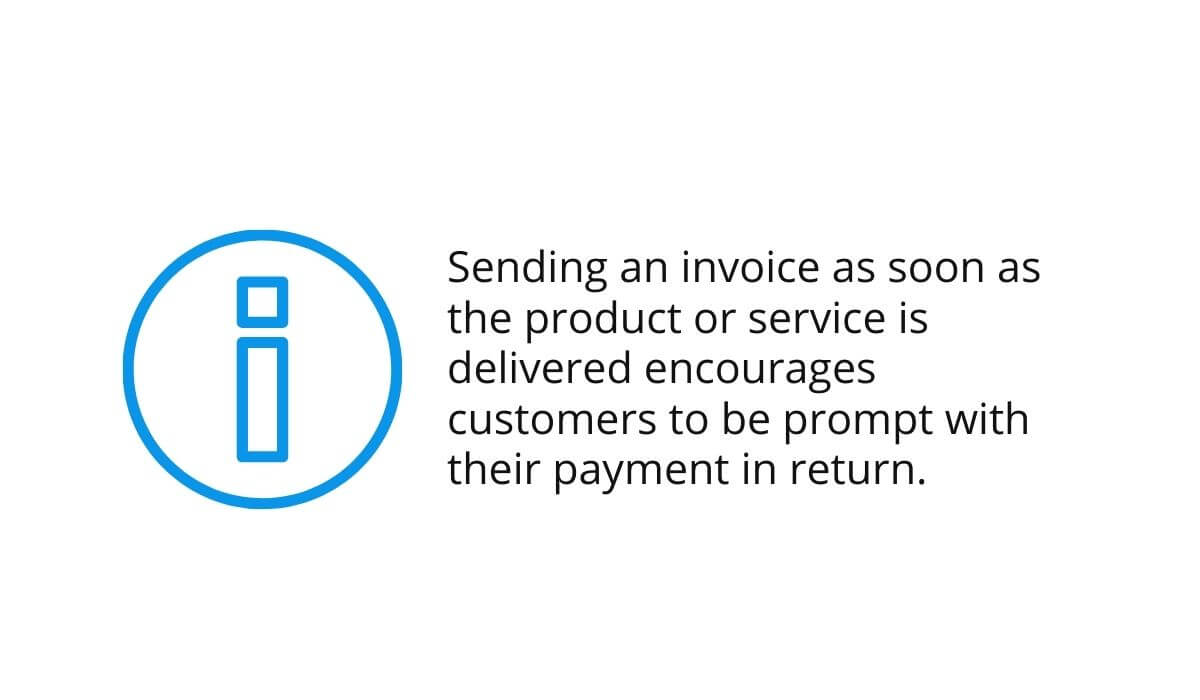
Source: Regpack
Having a consistent invoice delivery process shows your customers that you are organized and on top of your accounting system—which encourages them to be prompt with their payment in return.
What about if you have recurring clients?
In this case, pick a regular day of the month—the first, last, and 15th days of the month are popular—to send all of your invoices. This solution helps customers be better prepared to pay their monthly bill.
Not Itemizing Your Services or Products Clearly
It’s also essential to be clear with your customer about what services were offered and how much each portion of your service or product cost.
Especially with services, you should be able to provide a clear description of what your customer is paying for.
Give your customer a line-by-line breakdown, like this invoice design by Cameron McEfee, of the services or products they’re purchasing from you:
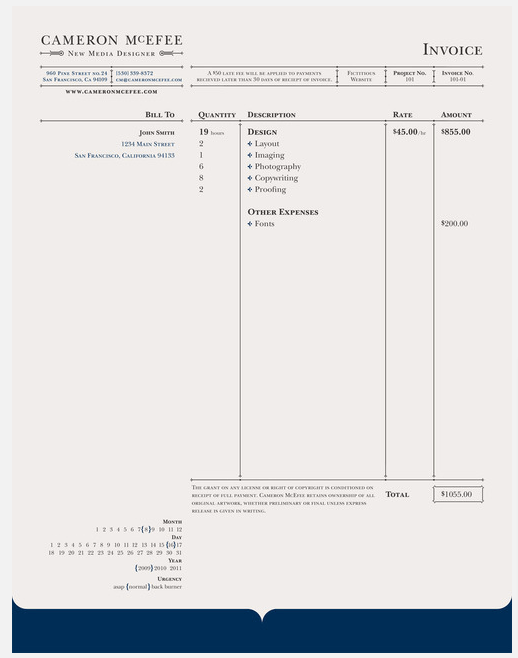
Source: Beautiful Invoices
This itemization helps avoid any conflicts that may arise if, for some reason, the customer was expecting a different bill total than is listed.
Not only does an itemized invoice show your customer why their bill costs what it does, but it helps your customers in their own expense tracking.
If your invoice is vague, the customer may need to reach out to you for clarification for their own records. This is an added inconvenience that they won’t appreciate.
As Lankitha Wimalarathna, founder and CEO of Vesess, puts it:
“Everything on an invoice should be centered around offering the client one action: paying their invoice. This means they should be able to answer the questions Is the cost for this work correct? and Do I understand what I’m paying for? If those answers are “No” in either case, your descriptions need some work.”
The more streamlined and pain-free you can make their experience with you—especially when it comes to parting with their cash—the better.
Not Showing Courtesy in Your Invoice
Many invoicing software options offer the ability to include a custom message in the invoice. This space lets you include terms of payment, like the due date—but why not add a note of courtesy?
Don’t assume there’s no room for customer service in your invoices. Even with a bill, customers appreciate a little human touch and friendly tone.
In fact, a 2019 FreshBooks study showed that including “Please” and “Thank you” in your invoices gets you paid faster.
While 78.62% of all invoices were paid on time, those whose terms included “Thank you” were paid at a rate of 89.61%—and those that included a “Please” were paid 88.07% of the time.
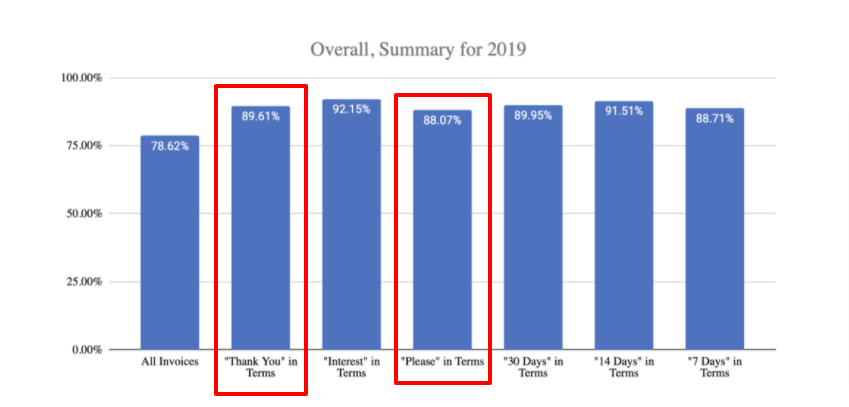
Source: FreshBooks
In short, if you want to get paid on time, add courtesy phrases to your invoice terms—they can increase your chances of getting paid by 10%.
This invoice design by Aaron Dickey includes a large space at the bottom of the page for a thank you note, which is hard to miss:
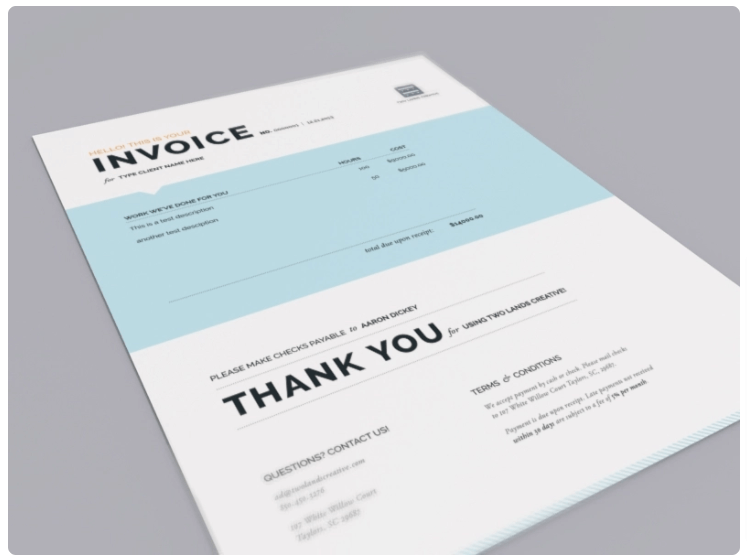
Source: Dribble
Making your friendly note visible helps keep the human element of your business front of mind when the customer receives the invoice, which makes them more likely to think of you in friendly terms—and pay promptly.
Having Unclear Payment Terms
Whatever you do, don’t forget to specify the payment due date.
Many merchants choose to use something generic in their payment terms, such as “Please pay upon receipt,” or even worse, “Net 15,” which is the type of financial jargon that can be confusing for those who didn’t major in accounting.
Instead, cut to the chase. Specify the exact date you’d like to be paid.
If you want to use net 15 payment terms (meaning you want to be paid within 15 days of the invoice), just say that.
For instance, if you submit your invoice to the client on July 15th, simply set the payment date for July 30th.
This invoice design, also by Cameron McEfee, includes a clear deadline at the bottom of the invoice, leaving no room for misinterpretation:
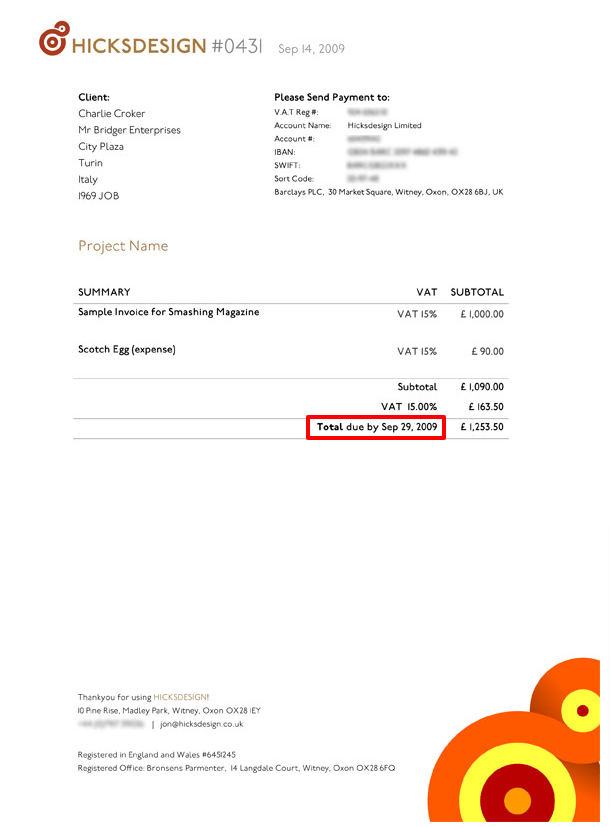
Source: Workflow Max
While it’s usually best to give your customer a grace period between the issuance of the invoice and the payment deadline (commonly 15 or 30 days), you should opt for whatever payment due date works best for you and your client.
Also, whatever timeline you choose, be sure to clarify it upfront in your client contract.
Make sure everyone is on the same page about payment terms, late fees, and payment methods before you begin your customer relationship.
Neglecting to Follow Up on Late Payments
Even if you make the payment deadline clear (and use “please” and “thank you” in your invoice), it’s impossible to completely avoid that occasional non-paying customer.
Hopefully, late payments will be few and far between—but when they happen, you can’t ignore them.
Not all late payments are intentional. Some clients have every intention of paying you, but life gets in the way and they forget.
In this case, a simple follow-up email may be all it takes to bring you back to the front of their minds and prompt them to make a payment.
Set a reminder in your calendar to follow up on late payments on a regular basis.
It’s best to follow up on late payments as soon as the deadline passes with a firm, yet friendly, email. This first communication is a gentle nudge that gives the well-meaning client a chance to rectify their mistake and keep your relationship on friendly terms.
Thankfully, Regpack includes automatic, customized reminders to take some of the awkwardness out of sending that follow-up email so that you can get that payment as painlessly as possible.
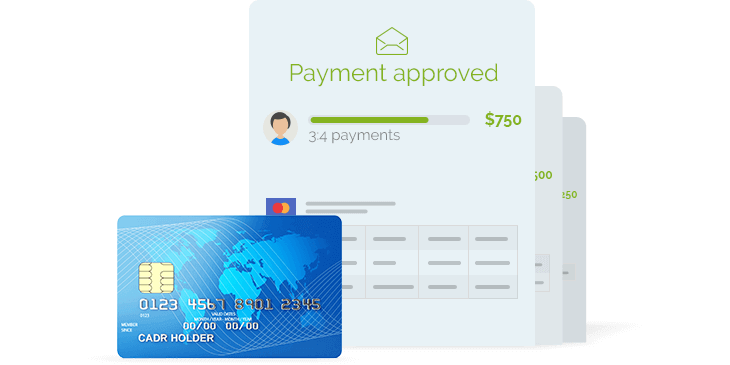
Source: Regpack
Once a week has gone by, though, it’s time to force the issue. Call the client directly to find out why they haven’t paid their invoice yet. As the FastPay blog advises:
“Often, a friendly chat will do the trick. Keep phoning every day until you get a result or make the decision to move to the next step.”
If the problem persists, that next step may be to work with the client to extend the deadline, agree to a payment plan, or even resort to legal action to get what you’re owed.
Omitting Company Branding on the Invoice
And let’s not forget the invoice design itself. Is your invoice completely plain—and could it belong to any company on the planet?
If so, you’re missing a customer-facing opportunity to not only appear professional, but improve your brand recognition. Invoices may seem dry and uninteresting at first glance, but they’re an important document that communicates a great deal about your company.
As John Rampton, Founder and CEO of Due, points out:
“Invoices are one of the most important documents for business owners. They ensure that you get paid for your goods or services. They’re used when it’s time to file your taxes. And, they can help boost your brand.”
There are real benefits to branding your invoice besides reinforcing your corporate image. Research indicates that you’re three times more likely to get paid if your invoice includes your company logo.
The more customized and brand-specific your invoice design is, the harder it will be for scammers to send fraudulent invoices.
To brand your invoice, use your company color palette and avoid making logo design mistakes to make sure anyone receiving your invoice knows exactly which business issued it.
Not Having Backups of Your Invoices
As with every aspect of running a business, you need a thorough and reliable record-keeping system.
You probably keep backups of your website content, customer records, and tax information—so why should invoices be any different?
In fact, your local laws and regulations may require you to keep such financial records on file for a specific time period (such as three to seven years in the United States).
And if any client disputes should arise, it’s important to have an archive of past invoices to draw on if needed.
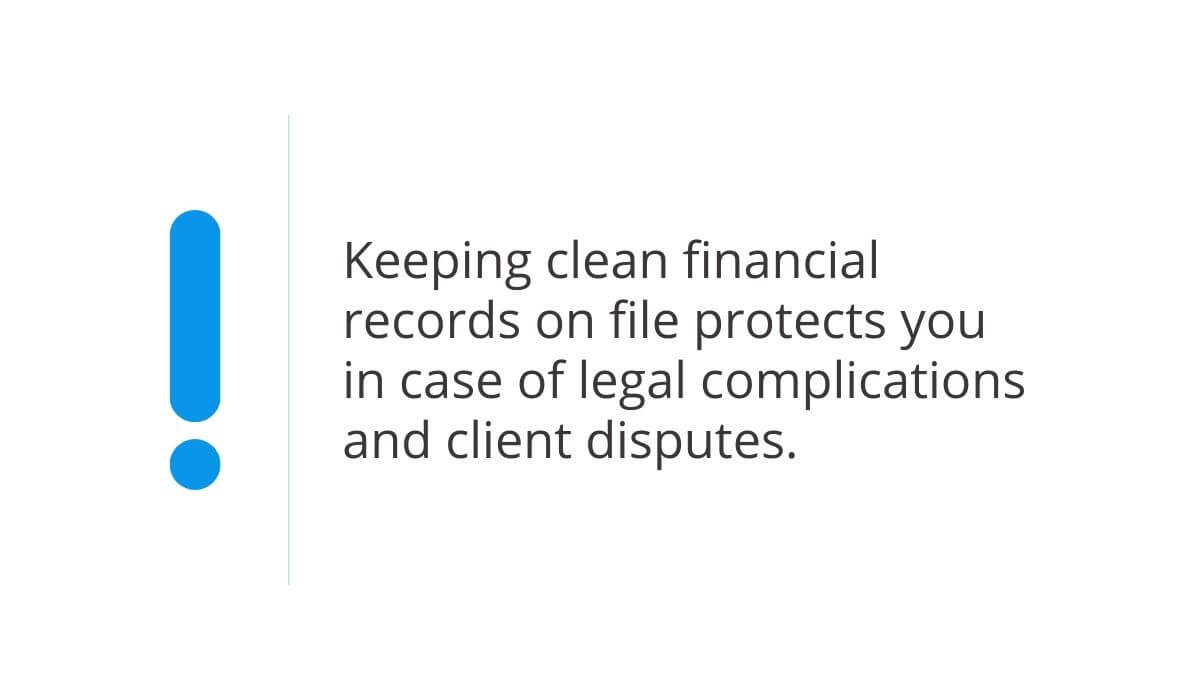
Source: Regpack
Keeping paper copies can be risky due to fire, theft, or loss, which is why it’s a better idea to keep a digital archive on the cloud.
Fortunately, Regpack offers daily automatic backups of all your client registration and payment data so that you won’t have to worry about the security of your data again.
And there are third-party software options like Skyvia available if you’d like a backup of your backup.
Not Mentioning Discounts or Late Fees
Be sure to be clear about any changes to your standard process—on either end of the spectrum.
If your customer is eligible for a discount, include it. And let them know if you offer discounts or deductions for certain payment types (such as ACH or eChecks).
One technique for encouraging on-time payments is to offer a discount to clients who pay within a specified time window.
And on the other end of the spectrum, avoid hitting your customer with surprise additional costs.
If they can incur a fee (such as a late fee, kill fee, or some other penalty), warn them ahead of time. No one likes to be penalized for something they weren’t aware of until it was too late.
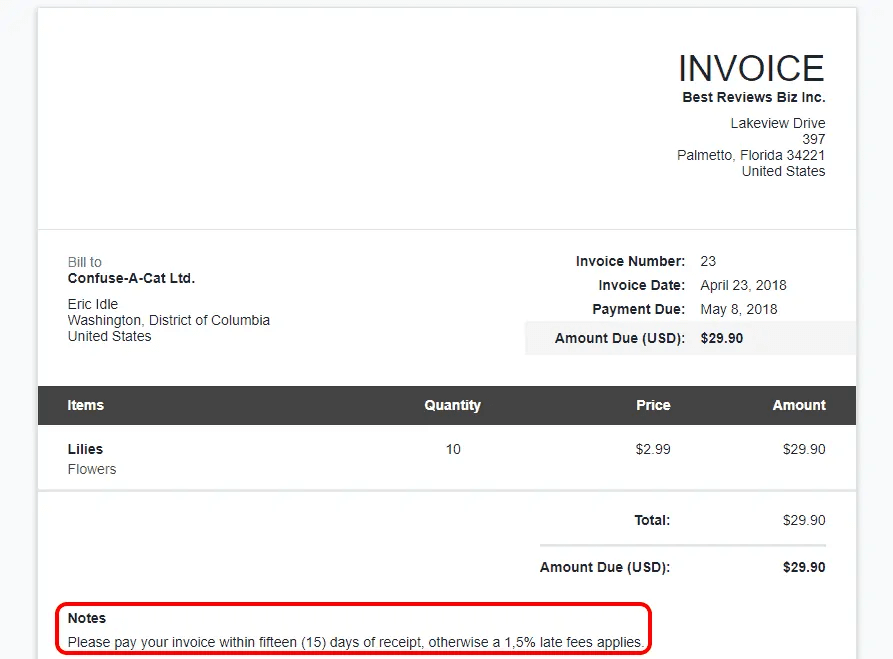
Example of a late fee note from Onlineaccountingsoftware
If you don’t explain late fees or other additional costs, the client will get understandably angry. Hidden fees feel like a scammer’s trick, which means the customer may lose trust in your business.
To preserve your customer relationship, be as upfront as possible. This includes reminding customers in real-time of impending fees, even if your fee system was explained in the original contract.
Making Payment Unnecessarily Difficult
Finally, make sure your clients can pay their bills with as little friction as possible.
You can do everything else perfectly—input all the right information, include company branding and courteous language, and send it on time—but if the customer can’t pay easily and with a few clicks, they’ll be more likely to set the task aside for another time.
As Richard Henderson writes for Hiveage:
“Your whole invoicing process should be geared towards making payment the easiest task your clients have to complete all month. There’s a direct correlation between a convoluted payment process involving complex instructions and details, and a delayed payment.
Especially if your business structure includes recurring payments, you need an easy way for your customers to pay each billing cycle.
The payment software you choose should offer automatic invoicing as well as a variety of payment options, for multiple currencies.
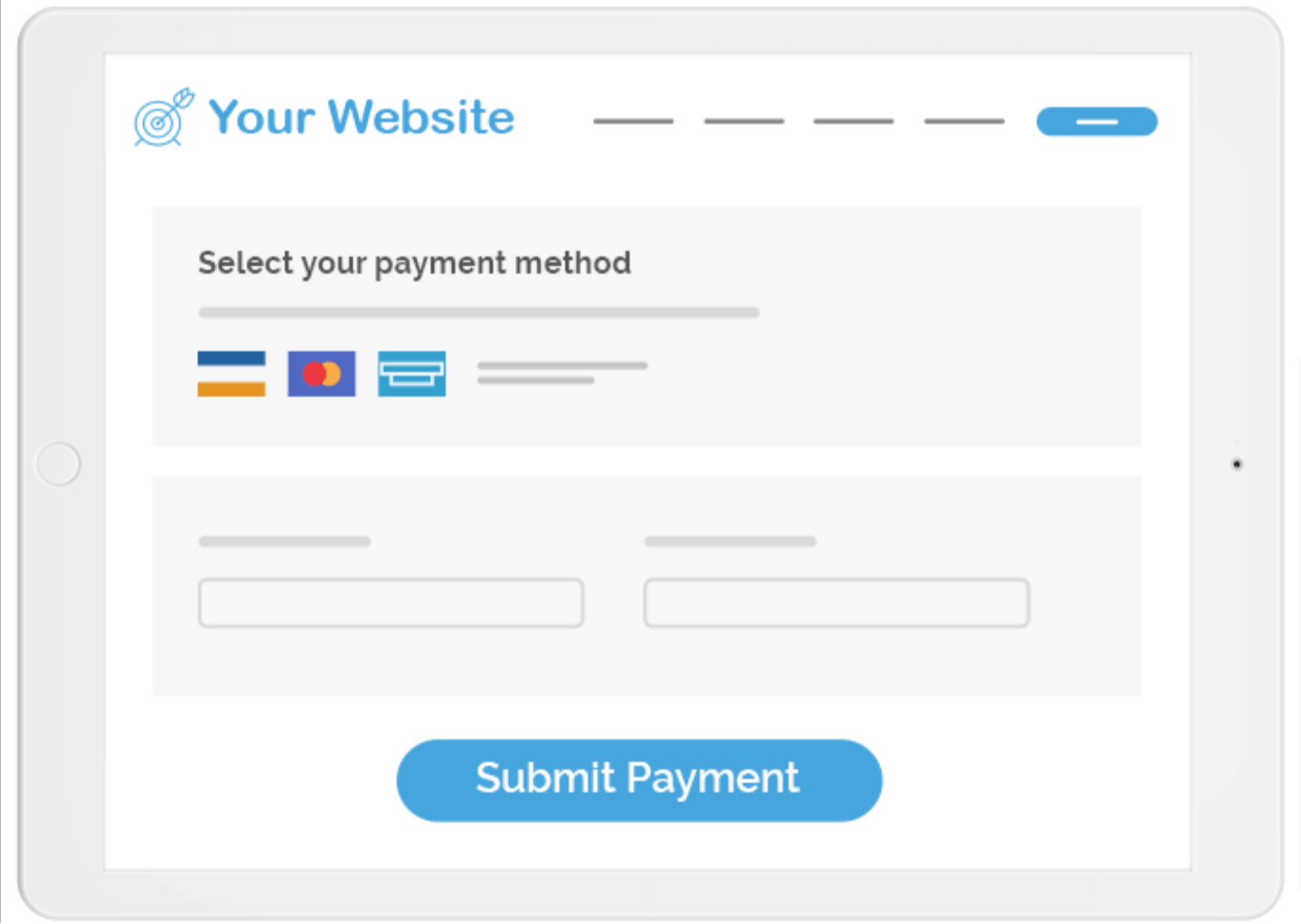
Source: Regpack
All of that should be available with a click directly from your invoice email or your website.
The Wrap-Up: Common Invoicing Mistakes in a Nutshell
While it’s easy to relegate invoices to the sidelines, they’re an essential part of your revenue process.
Without an effective invoice, you’re more likely to see late payments, data entry errors, and dissatisfied clients.
Businesses that don’t put in effort in their invoicing process can fall prey to common mistakes like failing to send them or follow-up on time, failing to keep accurate records, and being unclear about payment terms, discounts, and fees.
Thankfully, there are invoicing software options available that help you avoid these common mistakes.
Using Regpack, you can customize your invoice with your own branding, make use of automatic due dates and reminders, take advantage of automated backups, and accept a variety of payment options.
When your invoicing process is easy, efficient, and streamlined, it helps keep your revenue stream uninterrupted and your business running more smoothly overall.


